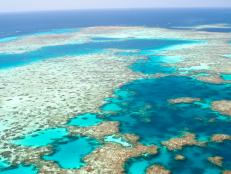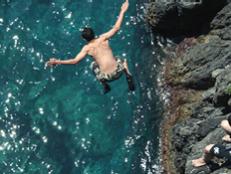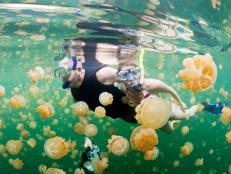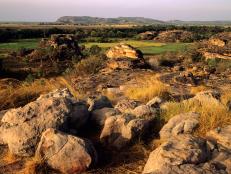Study Abroad With a Twist

For students who've earned a decent GPA (usually a 3.0 or higher) and have the financial means to leave campus, plenty of study abroad options are within reach: art history programs in Florence, Spanish language classes in Spain or finance courses in the United Kingdom.
More adventurous and open-minded scholars may yawn at these options, and for those brave souls we're offering suggestions for destinations that'll test the mettle of even the most daring 20-something.
Galapagos Islands
You could easily argue that Charles Darwin was the quintessential, and perhaps first, study abroad participant. He trucked all the way from England to the islands west of current-day Ecuador to study hundreds of species of flora and fauna for hours on end. Schools like the University of Alabama and University of Mississippi offer opportunities for students to do the same. The programs allow biology and oceanography students to call the birthplace of the theory of evolution and a dreamlike ecosystem of dense forests and diverse creatures their classroom.
Semester at Sea
It's an indecisive student's (yes, that includes you undeclared majors out there) dream come true. If you can't decide which country to spend a few weeks in, the Semester at Sea floating classroom drops anchor in a different time zone nearly every week. Professors, all of whom have intimate knowledge of each country on the itinerary, give onboard lectures, then spend time exploring each port-of-call with the students, immersing them in radically different cultures along the way.
Cuba
The anachronistic world of Cuba has always had a strange museum mystique. The island seems (at least to US citizens) like it's enclosed in a glass display with "Do Not Touch" signs facing the United States. Even though there's no direct flight from the United States to Cuba, pictures of the poor, yet vibrant, streets brimming with fleets of 1960s roadsters have enticed travelers to go out of their way to in order to experience Cuban culture. A handful of institutions including Harvard and the University of Buffalo still have permission from the US Office of Foreign Assets Control and the government of Cuba to give students a chance to spend time in Havana. Be warned, accommodations aren't nearly as cushy as those in other study abroad programs and you'll likely be surrounded by difficult conditions in some of the city's poverty-stricken areas. But those who hardly flinch in the face of adversity will find the experience incredibly fulfilling and enriching.
Nunavut, Canada
If you're not big on nightlife (or night, for that matter) and have always wondered about the Inuit lifestyle, you're in for a treat. Syracuse University offers students the "Arctic Journey" program in Nunavut, Canada. The program starts in mid-May and finishes in mid-June when there's almost 24 hours of daylight in Canada's largest territory. Students who trek to this barren shelf of ice in northern Canada are housed in apartments in Iqaluit, the region's capital city, but take frequent camping trips into the Arctic Circle where they experience the simpler, surprisingly tolerable conditions inside an igloo. Students are required to take 2 courses while in Nunavut: Arctic Geography/Environment and Inuit Political Development/Governance.
Vietnam
Biology students wishing to study in a little-known ecological hot spot can cross the Pacific to Vietnam, through programs like that offered by the University of Arizona. For years, Vietnam shunned outsiders from its borders, consequently turning the country into an untouched and virtually unstudied biological setting for researchers. Thanks to a burgeoning economy and improved infrastructure, students are now able to visit Vietnam and are encouraged by its government to do so. Intrepid undergrads who do come to the country will find themselves staying in actual field research accommodations like tents and huts. The program lasts roughly 6 weeks and the lectures, in addition to the biological courses, range in topics from geology to Vietnamese history.



























.jpg.rend.hgtvcom.231.174.suffix/1674758726773.jpeg)










